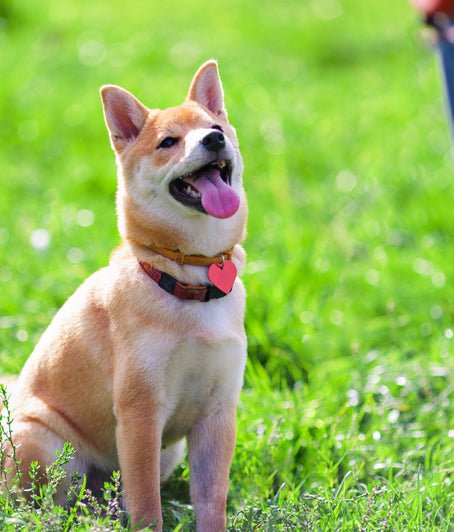![]() Listen to the Podcast
Listen to the Podcast
There are a lot of misconceptions in the dog world. Assumptions abound surrounding dogs who listen vs those who don't. Are some dogs, such as terriers really not trainable? Is the Border Collie really born with that amazing attention and drive to please? What are the real facts surrounding off-leash control? How do you convince your dog to choose you over the running squirrel at the park? Is there a magical solution to getting your dog to listen?
Here's the truth: it's not magic, it's training! Read more to find out what skills you should train to create a great listening dog whether they are ON or OFF leash!
The BIGGEST Mistake You can Make
First, I would like to address the biggest mistake people make when trying to attain off-leash control and that is the rush to allow freedom. Don't do it! As eager as you may be to allow your dog to romp on an off-leash hike or at the park, do not unclip that leash until your dog is capable of listening. Obviously, the main reason is keeping your dog safe. Allowing them freedom with no ability to control the outcome is extremely dangerous and could end in disaster. Just look at all of the lost dog postings that float around Facebook.
Another extremely important reason to keep them on leash is your relationship. It can be very damaging to your relationship with your dog to either a) allow them to ignore you when you call or b) get frustrated or angry with them and start hollering when they don't listen. It's unfair to expect them to listen when they haven't been taught how to listen. Both of these scenarios will work against your long term goal of off-leash control.
The biggest reason to keep them leashed, besides keeping them safe, is rehearsal. Rehearsal predicts behaviour, which means that if your dog rehearses great reinforcement and fun for recalling to you, they will learn to listen. If, on the other hand, your dog rehearses ignoring you to self-reward, that will become their habit.
Please, before you remove the leash and make your life EXPONENTIALLY harder in the long term, ask yourself this: Do you have good control of your dog ON LEASH? If the answer is anything other than a resounding YES, you are NOT ready to be thinking about taking them OFF LEASH yet! If your control is not impeccable on leash, it will be far worse off leash.
Training Wheels
We can't recommend it enough! Until you have reliable skills, your dog should be on a long line or leash all of the time. This will give you the necessary physical control you need until your dog is under reliable voice control.
Think of the long line like a good set of training wheels. They are designed to allow confidence in their task bit-by-bit until they are no longer required for the end result. Your long line should initially be very long - I usually start at 20 feet. When I'm happy with my dog's responses on the 20-foot long line, I might cut off a few feet. When I'm happy with my dog's responses while dragging the slightly shorter long line, I will cut off a few more feet. I will continue this until my dog is off-leash and still under control.
This weaning process will go a long way. Dogs are quickly able to identify the difference between being on leash and off leash. This is called being "leash-wise" and it usually happens with a dog who is afforded freedom too quickly. If they don't have a history of reinforcement for listening, they'll look for self-reward opportunities instead (like sniffing the ground or visiting others at the park) and will figure out when you can get them and when you are powerless. These are the dogs who learn to play 'catch-me-if-you-can'. Keep the reinforcement value for listening high and wean off the long line to prevent this leash-wise scenario.
What to Practise
Off-leash control is not just about a recall, although that is a crucial skill that should be at 100% before you unclip the leash. There are many things you can teach your dog to help you with overall off-leash control. Preemptively teaching your dog to listen on leash and then transitioning to leash or long line dragging will go a long way to teaching your dog to focus and listen for instructions from you. Make sure you put in the work first and with high value rewards. When you have great control on leash, you'll have a much easier time transitioning to off-leash. Here are a few more skills that I will not allow my dog's freedom without.
Response to Name
When I say my dog's name, I want them to orient their attention towards me so I can give them further instructions. If I were about to give my dog a sit or down cue and they were focused elsewhere, their response to name plays a definite role. I may use it as an extra attention-getter before I call them to "COME". I work hard on teaching my dogs to always respond to their name call. If I don't yet have a reliable response to name on leash, in any situation, with distractions present, I will not allow my dog to be off-leash yet.
Stationary Control
This is another must. People often underestimate the importance of stays and stationary control. DON'T! They are very important and should be a huge part of your training program.
Building emotional control into a dog starts with stationary behaviour. For example, if your dog can't stop themselves from leaving a sit to investigate a distraction, that's feedback for you that they won't be able to listen when contending with a similar distraction while they are in motion.
Work with your dog on stationary control exercises like sit and down stays. Start with a boring, white-room type of situation where nothing is happening and reinforce your dog for holding position. If they break position, put them back! This will give them clear information on both sides of the coin. Systematically add distractions into the scenario and work consistently to teach your dog to be able to contend with them.
Attention
This ties in with stationary control as again, the golden rule is that if you can't call on your dog to offer attention when they are stationary, there's no way you'll be able to get their attention when they're on the move.
We've got a fantastic (and FREE) attention workshop that you can sign up for here. Alternatively, you can read through details in a previous blog post on how to Teach Your Dog to Have Amazing Attention. Work on the skills of attention and teach your dog how to respond to an attention command before you consider allowing them off-leash freedom.
Random Stop
One further skill that I insist my dogs have before I will allow them freedom off leash is a random stop of some sort. I tend to use a down command as I find it easy and rewarding to teach. Basically, I want to make sure that I can stop my dog on a dime wherever they happen to be. A recall is not always needed, but you may want to stop forward motion if there's a distraction you've not noticed.
I've actually published a previous blog post on this potentially life-saving skill. Click here to read Another Life-Saving Skill that EVERY Dog Should Know
Tricks
I know, this one seems out of place. How can tricks help with off-leash control? Glad you asked! Tricks help with everything!!! They will help your dog learn to enjoy learning with you. They will help your dog figure out how to read you. They will get your dog used to the idea that working for you is fun and rewarding. Tricks go a long, LONG way! Find out more in this previous post, The Power of Trick Training.
Being patient and putting in the extra time and effort will make all the difference in how your dog listens for the rest of their lives. This extra work to make it happen will be a drop in the bucket when you reflect on the years of good listening your dog will give you. Take your time and be honest about your dog's progress. If they're not ready to listen without their training wheels, keep them on and keep working towards the freedom you crave. It will be worth it!
As always, Happy Training!

